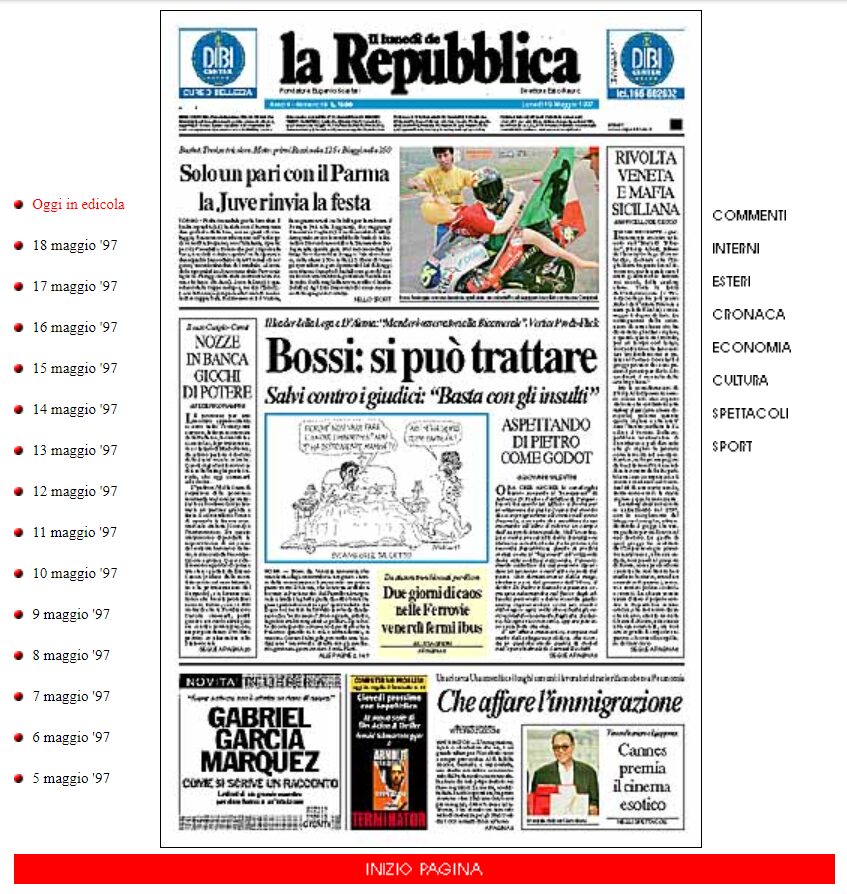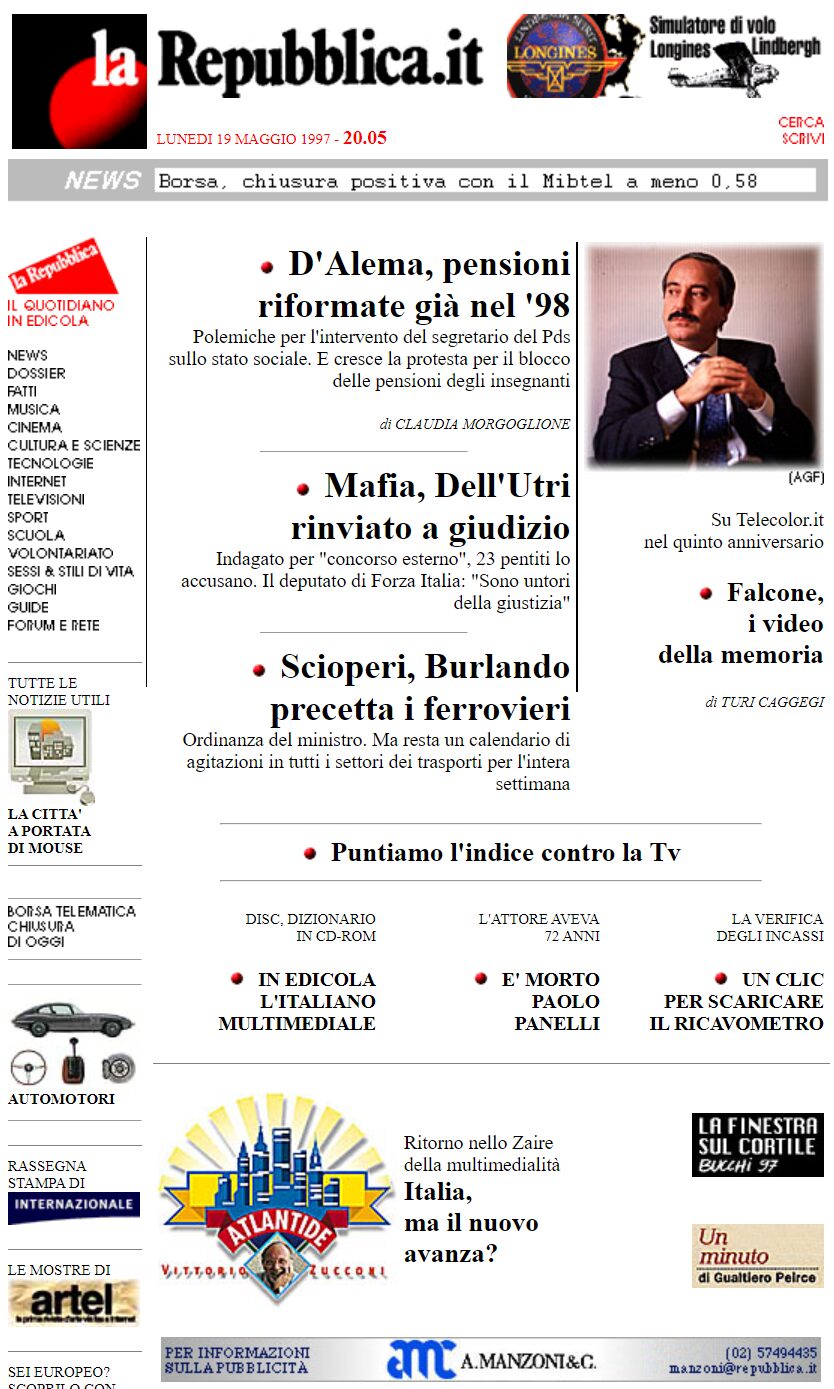In the vibrant landscape of the late ‘90s, Repubblica, one of Italy’s leading newspapers, faced a pivotal moment in its history as it embarked on the journey from print to pixels. The challenge was clear: seamlessly transfer the daily newspaper from the ATEX editorial system to HTML. It marked the beginning of a collective effort to embrace the digital era.

Approached by the head of a parallel structure overseeing the first online coverage of administrative elections (Elezioni 96), a solution was urgently needed. Overnight, I crafted a C program to parse the ATEX export into an HTML index and individual article files. The C program became the linchpin, bridging the gap between the traditional print format and the demands of the online world.
The following day, I presented the solution to the online coverage team. It wasn’t perfect, but we had a version of the newspaper in HTML, a step forward in Repubblica’s journey into the digital frontier.
After developing the program for converting from ATEX to HTML, I became the project lead for the Internet initiative, taking on a key role in coordinating efforts and ensuring the success of the project.

The collective effort led to the birth of Repubblica.it, with a shared vision of bringing the newspaper into the digital age. As Repubblica.it went online with a test version (Repubblica Lavori in Corso), the development of IES (Internet Editorial System), fondly known as “l’accrocco” in Italian (more or less “kludge”), began. The urgency to go online before completion added a layer of manual work, but it was a testament to the team’s commitment to the digital transition.
On January 14th, 1997, Repubblica.it went live. That day, I learned a crucial lesson. We agreed to launch the website at 11 o’clock, but my internet connection, a double-channel 128K ISDN, struggled to connect to our servers in Milan due to the overwhelming user traffic. Our General Manager was standing behind me, and I had a tough fifteen minutes to connect and start the new website. Needless to say, all future activities I followed directly in iNet’s server farm in Milan, and the connection was never again an issue.

From the day Repubblica.it went live, the challenge extended beyond IES development. The team faced the task of scaling the web server infrastructure to handle the unprecedented growth in traffic. The initial setup with Sun1 and Sun2 servers, balanced with DNS round robin, proved insufficient. A more advanced infrastructure, including a cutting-edge load balancer from Radware, was adopted to evenly distribute traffic among multiple front-end servers.
IES wasn’t just a solution; it was a precursor to modern Content Management Systems (CMSs). Syebold Magazine recognized its innovative approach, featuring an article that highlighted the system’s capability to work within the Netscape Navigator browser. IES handled editorial authoring, approval, publishing processes, and later introduced a “spooler” system for content alignment on web servers.
This wasn’t just a technological success; it was the result of collective dedication, resilience, and a shared vision to bring Repubblica into the digital age. As I reflect on this incredible journey, I am profoundly grateful to have been part of such a transformative project.
Special thanks to the visionaries who founded Repubblica – Vittorio Zambardino, Gualtiero Pierce, and Ernesto Assante. A heartfelt acknowledgment to my mentor and boss, Mario Salamida, and to Paolo Dal Pino, the General Manager of Repubblica, whose leadership shaped our path.
My appreciation extends to all my fellow colleagues at Repubblica. The newspaper was not just a workplace but a fantastic environment where innovation thrived.
Thank you all for making me part of this remarkable journey.
